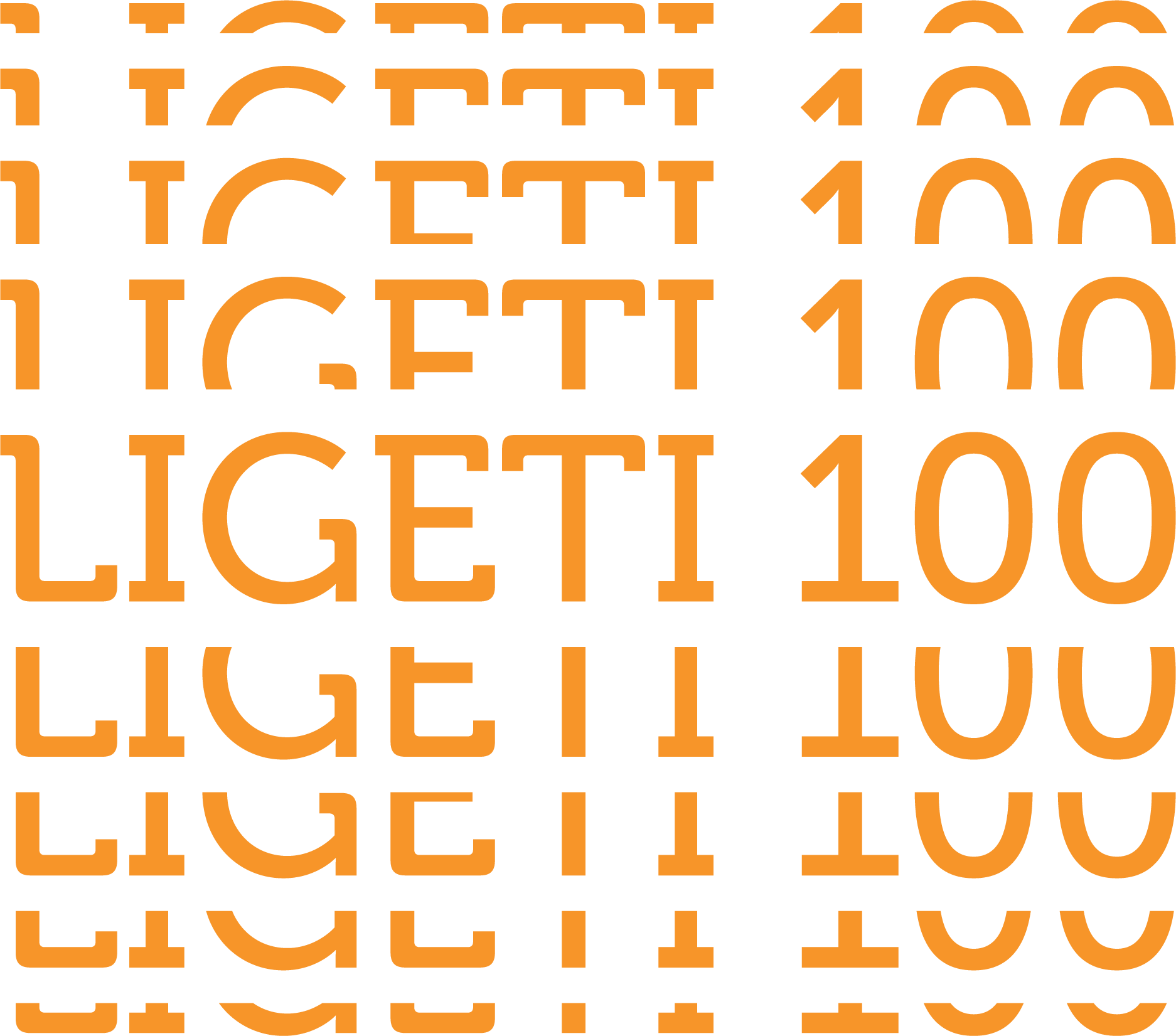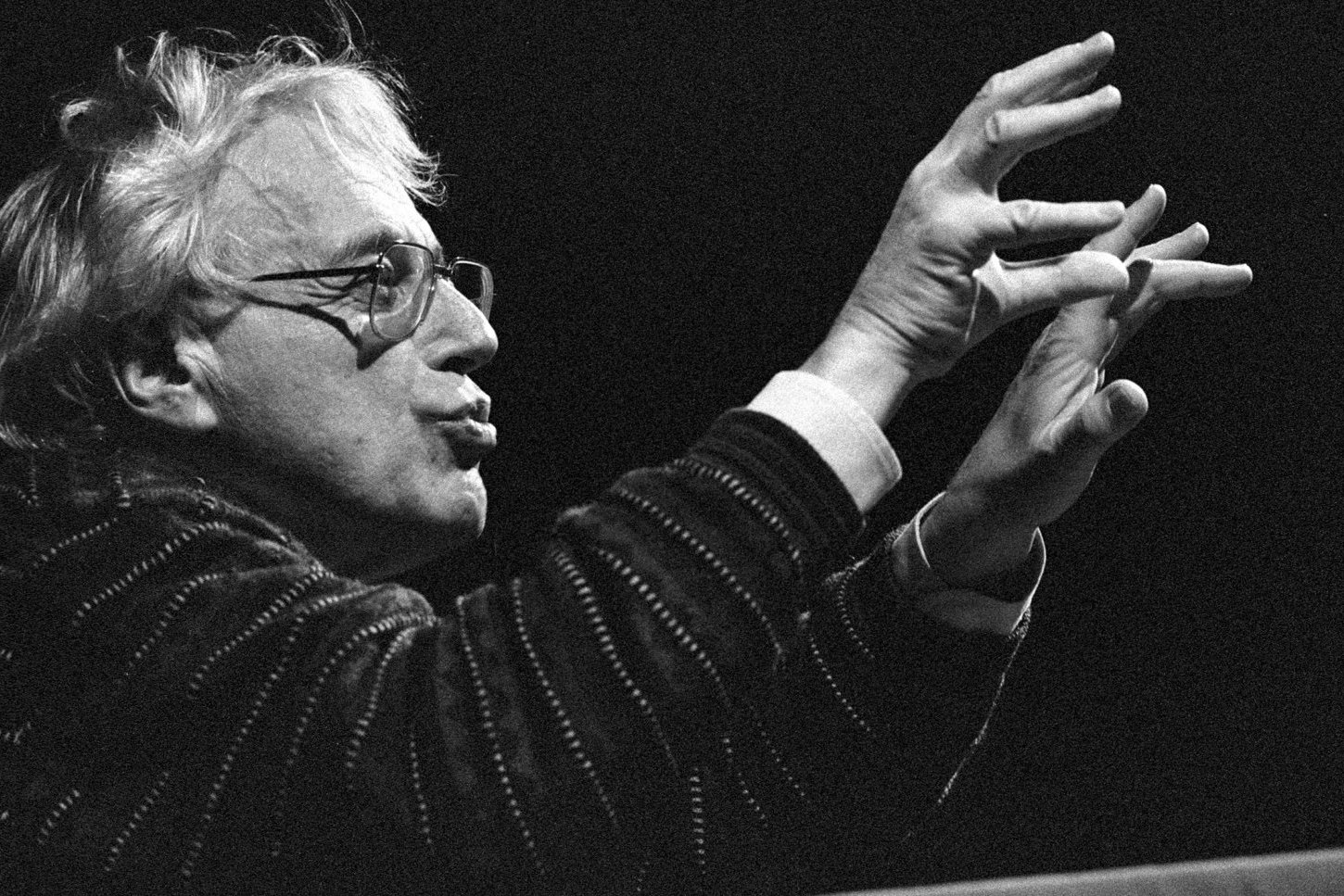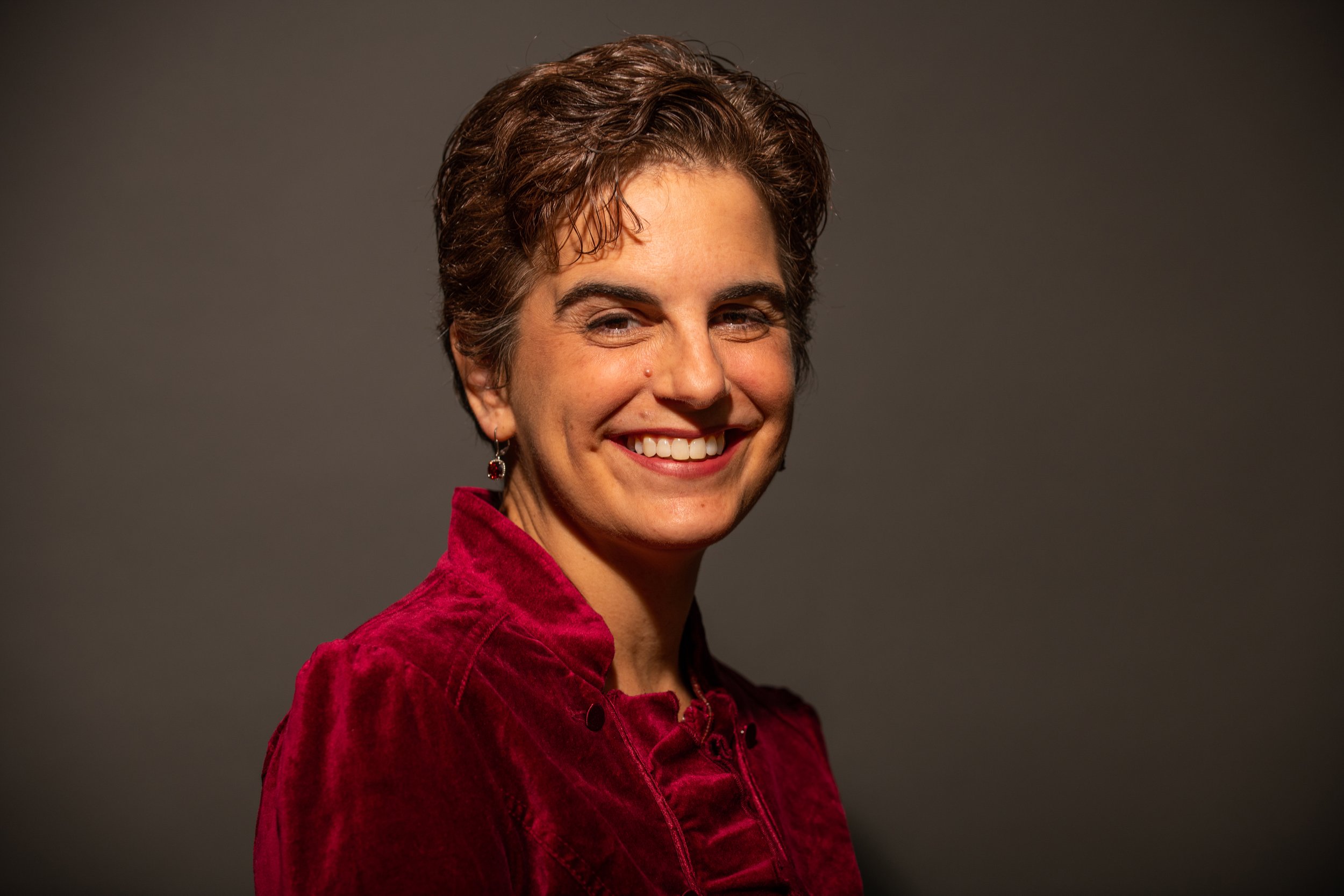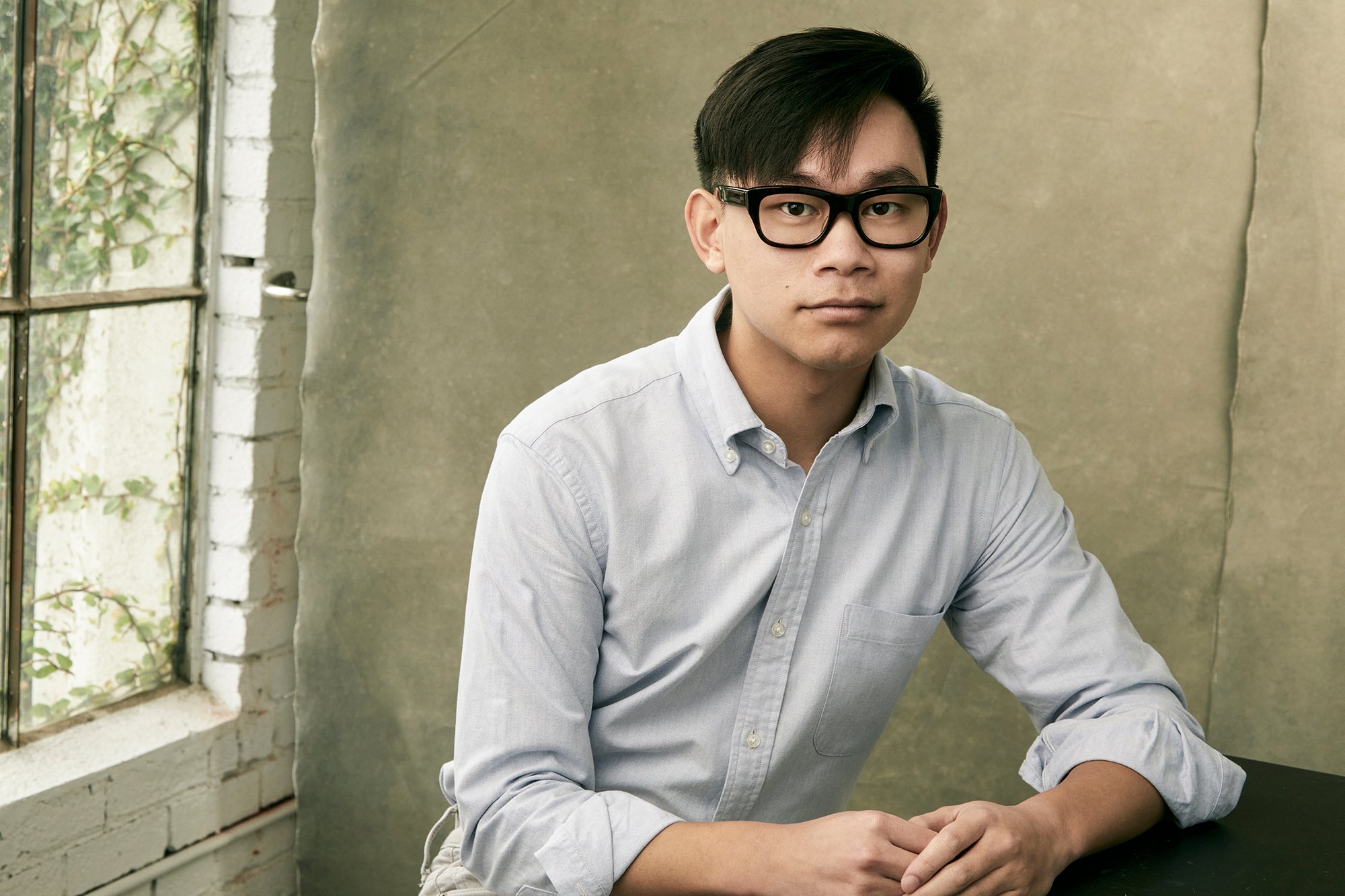
10/23/23 – 7:30pm
First Congregational Church
1031 S. Euclid Ave
Sarasota FL 34237
Streaming Online via www.ensrq.org
In a program celebrating the birth centennial of the incomparable György Ligeti, enSRQ welcomes back pianist Han Chen to perform the composer’s Études and iconic Trio for Horn, Violin and Piano. Also featured are mixed instrumentation pieces inspired by Ligeti’s continuing legacy: Wax and Wire from Viet Cuong, and Slipstream from Stacy Garrop.
enSRQ Artists Underwritten by Bob & Debbie Hendel and Ben & Gigi Huberman
Live-Streaming made possible by the generosity of Edward and Annette Eliasberg
Program
| Selections from the "Infinite Staircase" |
| Han Chen, piano |
| Stacy Garrop | Slipstream (2020) 15’ |
| I. The Horizon Beckons II. Riding Solo III. Adrenaline Rush |
| Bharat Chandra, clarinet R. Scott Sanders, Jr., horn Han Chen, piano |
|
Intermission |
| György Ligeti | Cello Sonata (1953) – 8’ |
| I. Dialogo – Adagio, rubato, cantabile II. Capriccio – Presto con slancio |
| Natalie Helm, cello |
| Viet Cuong | Wax and Wire (2014) – 8’ |
| Samantha Bennett, violin Natalie Helm, cello Bharat Chandra, clarinet Han Chen, piano |
| György Ligeti | Horn Trio (1982) 22’ |
| I. Andante con tenerezza II. Vivacissimo molto ritmico III. Alla marcia IV. Lamento. Adagio |
| Samantha Bennett, violin R. Scott Sanders, Jr., horn Han Chen, piano |
György Ligeti: (1923-2006)
was one of the most important avant-garde composers in the latter half of the twentieth century. He stood with Boulez, Berio, Stockhausen, and Cage as one of the most innovative and influential among progressive figures of his time. His early works show the influence of Bartók and Kodály, and like them, he studied folk music and made transcriptions from folk material. In Apparitions (1958-1959) and Atmosphères (1961), he developed a style forged from chromatic cluster chords that are devoid of conventional melody, pitch and rhythm, but instead grow into timbres and textures that yield new sonic possibilities. The composer referred to this method as “micropolyphony.” In Aventures (1962), Ligeti devised a vocal technique in which the singers are required to make a full range of vocalizations, cries and nonsense noises to fashion a kind of imaginary, non-specific drama, but with rather specifically expressed emotions. Ligeti was almost alone among progressive composers from the latter twentieth century who have written popular and widely performed music.
Ligeti was born on May 28, 1923, in the Transylvanian town of Dicsöszentmárton, Romania and grew up in Kolozsvar, Klausenburg. At the age of 14, he began taking piano lessons and soon wrote his first composition, a waltz.
Because he was a Jew living under the Nazi-puppet regime in Hungary, Ligeti was forbidden university study and thus enrolled in the Kolozsvar Conservatory in 1941, and began studies with Ferenc Farkas, a Respighi pupil. Later, in Budapest, he also studied with pianist-composer Pál Kadosa.
In January 1944, Ligeti was arrested and sent to a labor camp where he remained imprisoned until 1945. Other family members were sent to Auschwitz, where only his mother survived. Ligeti graduated from the Budapest Academy of Music in 1949 and began an extended period of study of folk music.
In the years of 1950-1956, he served as a professor at the Budapest Academy. His music was largely unadventurous during this period, owing to restrictions by the Hungarian Communist regime. Ligeti and his wife fled their homeland during the Revolution in 1956, settling in Vienna. Ligeti began studying and composing at the Cologne-based Electronic Music Studio from 1957 to 1959, producing the influential Artikulation (1958), one of his first electronic works.
Other important progressive works followed, such as the orchestral composition, Apparitions (1958-1959) and Atmosphères (1961). In 1959, Ligeti began serving as visiting professor at the Academy of Music in Stockholm and also started teaching courses at Darmstadt.
His choral work Requiem (1963-1965) was another success, as were Ramifications (1968-1969), for string orchestra or 12 solo strings, and Clocks and Clouds (1972-1973). In 1972, Ligeti became Composer in Residence at Stanford University and the following year took on a professorship at the Hamburg Academy of Music. Ligeti composed his opera Le Grand Macabre in the period 1975-1977, but revised it in the 1990s, with the final version completed in 1997. It has become one of his most popular large works.
In 1982, the composer’s mother died. That same year saw a return of Ligeti’s health after a period of five years’ sickness. In the 1980s the composer forswore further composition in the realm of electronic music. Ligeti retired from his post as professor of composition at the Hamburg Music Academy in 1989. In the 1990s, he spent much time on the aforementioned second version of Le Grand Macabre.
Ligeti received his share of awards and prizes, including the 1986 Grawemeyer Prize and the 1996 Music Prize of the International Music Council.
Biography by Robert Cummings
György Ligeti: Selected Études
György Ligeti’s Études, written between 1984-2001, redefined the piano’s tonal possibilities and are considered one of his major creative achievements, as well as being one of the most significant sets of piano studies of the 20th century. They inevitably draw on influences from the past such as Chopin and Debussy, but avoid any sense of eclecticism. Ligeti’s often spectacularly virtuoso use of complex rhythms and geometric patterns proceeds from simple core ideas to create music that is ‘neither “avant-garde” nor “traditional”, neither tonal nor atonal’, and always backed by that glint of humour in the composer’s eye.
About the Infinite Staircase Project
“Infinite Staircase” is a commissioning project featuring the World Premiere of 18 new works for solo piano, co-commissioned by Metropolis Ensemble and pianist Han Chen, each paired with one of Hungarian-Austrian composer György Ligeti’s 18 canonic piano études.
Cello Sonata
Ligeti composed the two movements of his Sonata for solo cello in 1948 and 1953 and it is one of his earliest significant works. Dialogo, the first movement, was composed during Ligeti’s last year as a student as a love-token for a fellow student, but evidently his feelings were not reciprocated as she simply thanked him for the manuscript and never played it. Five years later, the cellist Vera Dénes asked Ligeti for a cello piece, at which point he unearthed Dialogo and added the second movement, Capriccio. Ligeti himself wrote of Dialogo that he was trying to write music that was approachable: ‘I attempted in this piece to write a beautiful melody, with a typical Hungarian profile, but not a folk song … or only half, like in Bartók or in Kodály—actually, closer to Kodály.’ If the Phrygian-mode melody of the slow movement suggests a homage to Ligeti’s teacher Kodály, the later Capriccio resembles what a Paganini Caprice might have sounded like if it had been re-imagined by Bartók at his boldest—a driving, virtuosic moto perpetuo which has a brief moment of respite where the theme of the Dialogo is recalled (its two phrases brusquely interrupted), before a final dash to the close on a chord of G major.
–Nigel Simeone
Horn Trio
The Trio for Violin, Horn and Piano by György Ligeti was completed in 1982. The piece was a turning point in Ligeti’s career. Ligeti had composed little since he completed his opera, Le Grand Macabre, in 1977, having only finished a few smaller pieces, like Hungarian Rock (chaconne) and Passacaglia ungherese for harpsichord.[2] Influenced by sources as diverse as sub-Saharan African drumming, the music of Conlon Nancarrow, and the piano music of Chopin and Schumann,[2] the Trio is considered to be the watershed moment that opened up his “third way,” a style that Ligeti claimed to be neither modern nor postmodern.[3]
Ligeti wrote the Trio at the suggestion of pianist Eckart Besch as a companion to Johannes Brahms’ Horn Trio, one of the few other examples in the genre, which is why the Ligeti Trio is marked Hommage à Brahms. Ligeti recalled his reaction to the suggestion: “[a]s soon as he pronounced the word ‘horn’ somewhere inside my head I heard the sound of a horn as if coming from a distant forest in a fairy tale, just as in a poem by Eichendorff.”
Stacy Garrop (b. 1969)
is a full-time freelance composer living in the Chicago area. Her catalog covers a wide range, with works for orchestra, opera, oratorio, wind ensemble, choir, art song, various sized chamber ensembles, and works for solo instruments.Stacy Garrop’s music is centered on dramatic and lyrical storytelling. The sharing of stories is a defining element of our humanity; we strive to share with others the experiences and concepts that we find compelling. She shares stories by taking audiences on sonic journeys – some simple and beautiful, while others are complicated and dark – depending on the needs and dramatic shape of the story.
Recent commissions include Forging Steel for the Pittsburgh Symphony Orchestra, Goddess Triptych for the St. Louis Symphony Orchestra, Spectacle of Light for the Music of the Baroque Orchestra, Berko’s Journey for the Omaha Symphony, Song of Orpheus for the Louisiana Philharmonic Orchestra, The Battle for the Ballot for the Cabrillo Festival Orchestra, In a House Besieged for The Crossing on texts by Lydia Davis, and Alpenglow, a double concerto for saxophone, tuba, and wind ensemble commissioned by a consortium of 18 organizations. Notable past commissions include My Dearest Ruth for soprano and piano with text by Martin Ginsburg, the husband of the late Supreme Court Justice Ruth Bader Ginsburg, Glorious Mahalia for the Kronos Quartet, Give Me Hunger for Chanticleer, Rites for the Afterlife for the Akropolis and Calefax Reed Quintets, Slipstream for the Dallas Symphony Orchestra Musicians Chamber Music Series, and Terra Nostra (oratorio), commissioned by the San Francisco Choral Society and Piedmont East Bay Children’s Chorus. Her current commissions include upcoming projects with the U.S. Navy Band, Fauré Centennial Festival, and Chicago Opera Theater for a new opera with librettist Jerre Dye that will premiere in a future season.
Garrop has received numerous awards and grants including an Arts and Letters Award in Music from the American Academy of Arts and Letters, Fromm Music Foundation Grant, Barlow Prize, and three Barlow Endowment commissions, along with prizes from competitions sponsored by the Detroit Symphony Orchestra, Civic Orchestra of Chicago, Omaha Symphony, New England Philharmonic, Boston Choral Ensemble, Utah Arts Festival, and Pittsburgh New Music Ensemble.
Theodore Presser Company and ECS Publishing carry her works. Garrop is a Cedille Records artist with pieces currently on twelve CDs; her works are also commercially available on more than a dozen additional labels.
Slipstream
“The first time I saw slipstreaming in action with professional cyclists, I was in awe,” says Stacy Garrop about the inspiration behind her composition SLIPSTREAM for clarinet, horn, and piano. Originally written for performers who are also avid cyclists, Garrop describes various kinds of cycling experiences depicted in the work’s three movements: “The piece opens with The Horizon Beckons. A cyclist hears an enticing call emanating from the mountains, then the cyclist starts pedaling towards the mountains in search of adventure. Riding Solo, the second movement, explores the quiet of riding alone, the beauty of the landscape, and the shifting of the light and clouds, all while we hear the bike’s wheels in constant motion. Adrenaline Rush, the third and final movement, depicts the heat of competition. We hear the constant jockeying of cyclists within a peloton as they slipstream with each other and move with the wind. At the very end of the movement, we hear sprinters race for the finish line with everything they have left in their legs.”
- Stacy Garrop
Viet Cuong (b. 1990)
Called “alluring” and “wildly inventive” by The New York Times, the “irresistible” (San Francisco Chronicle) music of Vietnamese-American composer Viet Cuong (b. 1990) has been commissioned and performed on six continents by musicians and ensembles such as the New York Philharmonic, Eighth Blackbird, Saint Paul Chamber Orchestra, Sō Percussion, Alarm Will Sound, Atlanta Symphony, Sandbox Percussion, Albany Symphony, PRISM Quartet, Orchestra of St. Luke’s, and Dallas Winds, among many others. Cuong’s music has been featured in venues such as Carnegie Hall, Lincoln Center, the Kennedy Center, National Gallery of Art, and Library of Congress, and his works for wind ensemble have amassed several hundreds of performances worldwide, including at Midwest, WASBE, and CBDNA conferences. He was recently featured in The Washington Post‘s “21 for ’21: Composers and performers who sound like tomorrow.”
In his music Cuong enjoys exploring the unexpected and whimsical, and he is often drawn to projects where he can make peculiar combinations and sounds feel enchanting or oddly satisfying. His notable works thus include concerti for tuba and dueling oboes, percussion quartets utilizing wine glasses and sandpaper, and pieces for double reed sextet, cello octet, and solo snare drum. This eclecticism extends to the range of musical groups he writes for, and he has worked closely with ensembles ranging from middle school bands to Grammy-winning orchestras and chamber groups. Passionate about bringing these different facets of the contemporary music community together, his recent works include Vital Sines, a concerto for Eighth Blackbird and the United States Navy Band, and Re(new)al, a concerto for percussion quartet with a variety of ensemble accompaniments. He is the California Symphony’s 2020-2023 Young American Composer-in-Residence, as well as the Pacific Symphony’s current Composer-in-Residence.
Cuong is an Assistant Professor of Music Composition and Theory the University of Nevada, Las Vegas. He holds degrees in music composition from Princeton University (MFA/PhD), the Curtis Institute of Music (Artist Diploma), and the Peabody Conservatory (BM/MM).





